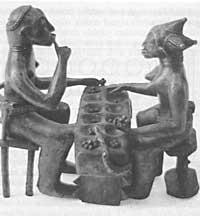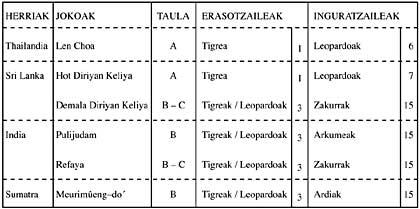Fanorona
1994/05/01 Angulo, Patxi Iturria: Elhuyar aldizkaria
History of the Fanorona
Fanorona (pronounce fanurne) is a game known since ancient in Madagascar. Fanorona is not only a game game, but requires deep reflection. The player must have an overview of the game, prepare a plan, take positions, initiate an attack or be able to make a cut. Pawns should move head-on to analyze the opposite responses.
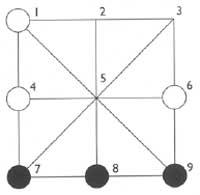
According to its tradition, the origin of the game is Madagascar. No other people have participated in this game, at least in the current form of fanoron-tsivy. In 1928 the priest Randzavola saw a fanoron-dimy on a rock in Jerusalem, but the locals did not know how to play.
There are rules that remind of the checkers game. Therefore, some authors claim that along with the calendar, magic, spell, writing and other customs, the Arabs also brought to Madagascar the fanorone. However, at present, while the names of the topics of slaughter and astrology come from Arabic, all the topics used in the game of fanorone are derived from flexibility.
In "Tantaran ' ny Andriana" R.P. Callet says that the game of fanorone is prior to the time of the Vazimba tribe and that it went to Madagascar with its first inhabitants. The elders called fandrao maty for fear.
Andriamanelo (1540-1575), winner of the owners and vazimbatas of Alasora, called him Sorotr` Andriamanitra (written by God). In the reign of Ralambo (1575-1610) the successor Andriantompokoindrindra was a well-known player whose name has been linked to the fanorone of the Ambohi suitcase.
Closer, the elders of Ambohimanga, Andriambelomasina (1730-1770), Andrianjafy (1770-1787) and Andrianampoinimerina (1787-1810) played the fanorona on the famous rock of the Ambatomiantendró.
The daughter of Ambohijoky's boss, Rafotsirabodo, one of Andrianampoinimerina's twelve women, was once a great player.
The Malagasy consider that their ancestors used fanorona as a way of friendly relations with the neighborhoods. Andriamasinavalona welcomed in Ambohidratimo the peasants who were going to play with him in the fanorona.
The Flexible Encyclopedic Dictionary "Firaketana" refers to the meetings held by Razakatahiana, lord of Ambodirano in Ambatomalaza, and Ranoko, head of the Manisotra tribe of Ambohijoky, where fanorone plays were held with a large number of audiences.
In 1810, after the coronation of Radar La in Mahamasina Square, the reds, tribes and clans were located around the king according to the lines of fanorona dimy.
According to one custom, it is not a fanorona who was copied into official ceremonies, but the way to position people gave the idea of creating a game.
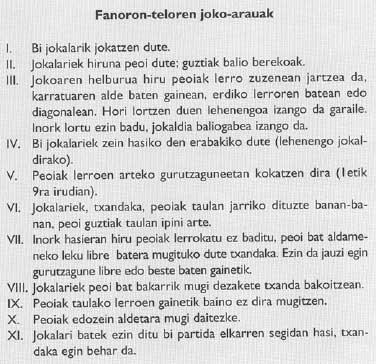
Another version of the origin is that more than three centuries ago Ralambo was the head of a region of Imerina. His successor, Andriantompokoindrindra, lived 12 km east of the town of Ambohimalaza. The heir prepared plans to govern the kingdom to take over his father. The large concentrations for the cabary-jars were very important in public life and the heir came up with locating the population based on a large square of 16 small squares and two diagonals.
He proposed placing Olomainty on the outer faces of the square. In diagonals the Hovatares, in other interior lines alternately the Hovatares and the Andrians. Later, he thought that if the Olomainty only left them on the outer lines, they would be mined and introduced four complementary transversal lines in which the Olomainty could be located, staying closer to him and the center.
The lines mentioned above corresponded to the fanoron-dimy game. As he waited for the throne he dedicated himself to his planet, imagined the violations, the methods of attack and defense, represented the warriors through the pawns he moved. Subsequently, the number of squares would multiply by two, in defense or attack. So he created fanoron-tsivy. Obsessed with the preparation of his plans, he lost his inheritance for the benefit of his brother Andrianjaka.
The work "Tantaran` ny Andriana" reminds us that the game takes place every day, and despite the duties of urgency, will not leave it until the end of the game. So that the population does not stop growing rice for its passion for the game, the fanorona is prevented in the rains. According to a proverb, review wastes time and the fannish makes you forget duty.
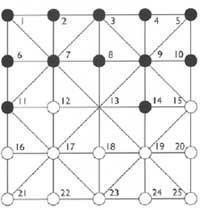
Montgomery en "Antananarivo Annual" (1886) cuenta: In a campaign carried out by Radama to the south of the island, a chief stood on his stone door without warning of the danger that ran. He controlled with one eye the enemy approach and took care of the fanorona play he was playing with an officer of his. He could not finish the move, because a bullet rang in the head.
At present, the in-laws invite to act in the fanorona to ensure the clarity of the boyfriends of their daughters. If you prove that you are intelligent, you will accept it as such. If not, return home empty-handed. Fanorona is played between two people, but no wonder teams work. Gambling is rarely in money. Vela (the punishment of the loser) settles or incites players better than money. It is very difficult to draw or cheat in the game, as pawns and movements become visible.
Fanorona games
There are three types of fanoronas: fanoron-telo, fanoron-dimy and fanoron-tsivy.
Fanoron-telo
Fanoron-telo or three-line fanorona has recently entered Madagascar. (see game rules).
Fanoron-dimy
Fanoron-dimy or the primitive five-line flexible fanorona game. It consists of four fanoron telecentres joined together. Each player has 12 pawns. The pawns are placed in the table before the play begins, in the first two rows against the 10 players and the other two in the center line, interspersed with the opposing pawns, leaving the center free (on both sides of the center will be different pawns).
Fanoron-dimy and fanoron-tsivy have two phases: riatra and sail. Riatra's rules are the same. In Vela (in sanction), instead of 5 pawns against 22 pawns, 3 pawns act against 12 pawns. (See candle). Fanoron-dimy is the game for those who start.
Fanoron-tsivy
Fanoron-tsivy or nine-line fanorona is an authentic flexible game. You get by joining two fanoron dimy: Players have 22 pawns. They are placed in the table before starting to play, 18 in the first two rows and the other four alternated in the center, leaving the central intersection free. (See game rules).
When players can't make any catch, they can give the opponent to catch a pawn in order to make a cut or pull the opposite out of their domain position.
During the plays, players do not exchange pawns or change places.
The following page shows an example of riatra. When pawns cannot catch more, the play is null.
In general, a move is void when the number of pawns left to a player is half more of the other. For example, 3 pawns against 2 pawns, 4 pawns against 3, 3 pawns against 5, 4 pawns against 5, 4 pawns against 6, etc. The result will depend on the positions of the pawns.

Sailing
Rules of the sailing phase of the Fanoron-dimy and Fanoron-tsivy:
When a player loses the riatra, another player cannot start against the winner. He has to play a kind of tail revenge in which he is given a great advantage so that he can commit suicide. This sanction is called candle (= debt). If the loser wins the test, he commits suicide and can play the riatra again. If Vela is worthless, it will be played again.
There are two types of candles: the be candle and the kely candle. Players must choose the type of candles before starting the riatra.
Sailing
Pawns are placed as riatran. Sailing begins with the loser. In every move only a pawn can be caught. While the winner of Riatra has more than five pawns, the pawn must move so that the loser can always catch them. The winner cannot catch up until the first 17 pawns are lost. Start fishing when you have 5 pawns. From there they will act like riatran and can capture more than one pawn in each movement.
If after a mistake the loser, before capturing the pawn 1 7, can not catch, will win the candle and can start again in the riatra.
Kely candle
The pawns are removed from the back row of the riatra winner. The loser starts and the rules are the same as those of the other candle, that is, until the winner has 5 pawns only the losers, and one by one, can catch them. Since then both can capture as many pawns as they want. (See example of sailing).
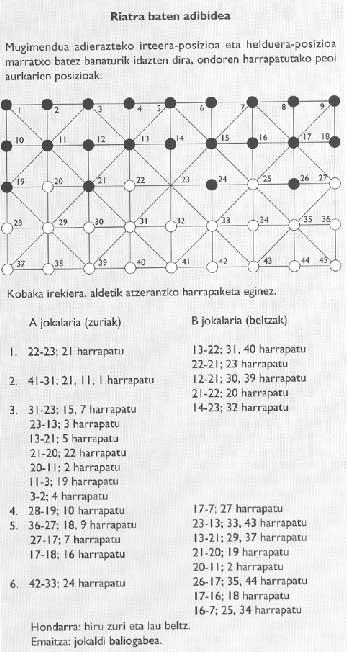
Counting points
There are no fixed rules for counting points. In the tournaments held in Antananarivo, the following table applies:
- Riatra: the winner will score 3 points and the loser 0. No points are dealt in null plays.
- Sailing: if the winner of the riatra wins 3 points. No points are distributed in null candles. If the loser wins, he does not earn points because it is a penalty.
In the last classification the points obtained in all the riatras and candles are added.
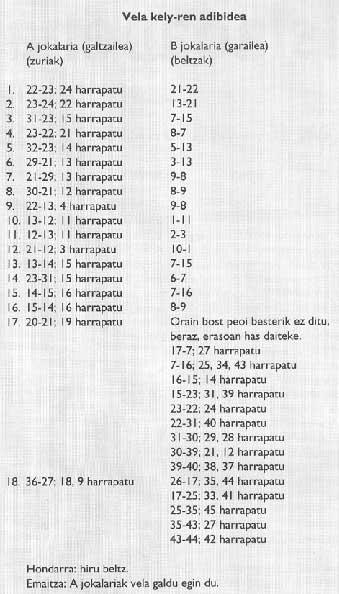
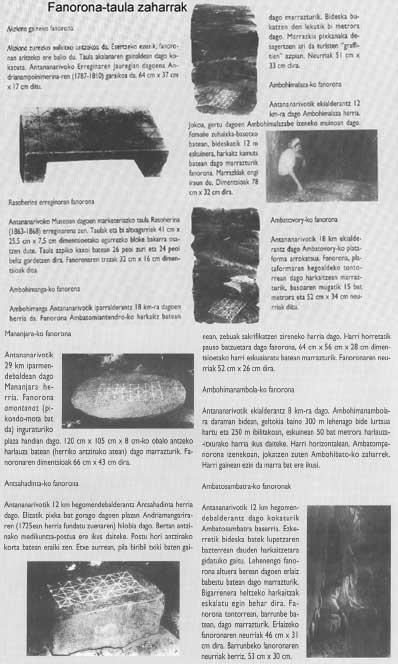

Gai honi buruzko eduki gehiago
Elhuyarrek garatutako teknologia




